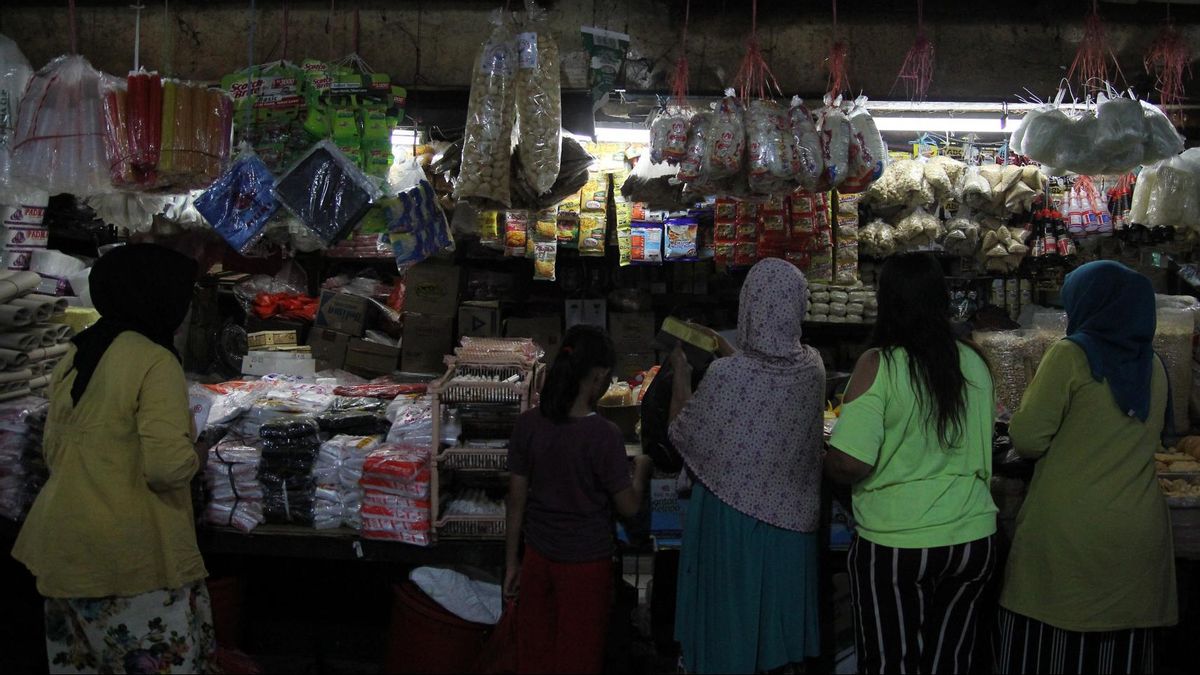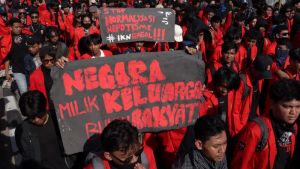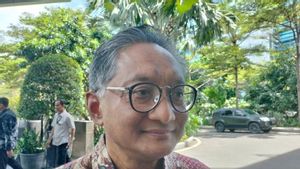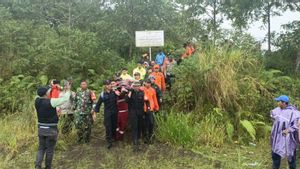JAKARTA - Monday, 27 July, COVID-19 cases in Indonesia exceeded 100,000. Chairperson of the Task Force for Handling COVID-19 Doni Monardo said community indiscipline was the cause. On the other hand, various government policies are in the spotlight. If the government can blame the people, who can blame the people?
"In the last few weeks, the number of positive cases has averaged one thousand per day. It could even be more than two thousand cases. This is the importance of all of us reminding us that we are not disciplined enough ourselves. We invite others to be responsible," said Doni Monardo, after Limited Meeting, Monday, 27 July.
Of the three rules in the COVID-19 health protocol - mask, washing hands, and keeping your distance, Doni mentioned the last point as the most difficult effort to do. "The most difficult, keep your distance. "If you can control yourself, keep your distance, keep your distance from one another and do not approach the crowd, then the transmission process can be reduced and prevented," he said.
Sociologist at the State Islamic University (UIN) Jakarta, Tantan Hermansyah, highlighted Doni's statement. This time, the government can no longer just blame the people. The problem is clearly not just discipline. There are policies that open up opportunities for interaction, even gatherings of people.
"Ambiguity like this causes some people to follow. And like the law of society, there are always more followers than the perpetrators. This bubble gets more and more intense when it spreads across various media platforms," said Tantan, contacted by VOI, Tuesday, July 28.
Determination of the policy basisThere are at least four policies that trigger interaction that should be criticized, ranging from opening malls, tourism, returning to work in offices, to operating public transportation. Of course there are many considerations behind it, be it economic, social, or political.
However, there is one root that causes all problems to become more opaque in the handling of COVID-19 in Indonesia: policy making that is not based on a scientific basis. The implication is simple. Scientific studies can be a guide for the government to determine policy derivatives, including various protocols that are more precise and measurable.
President Joko Widodo (Jokowi) has often refused when it was said that government policies were not based on scientific studies. However, it's hard to believe. You don't have to be far. The question of predicting the peak of COVID-19 alone shows a contradiction.
Doni Monardo said it was impossible for Indonesia to predict the current peak of COVID-19. In contrast, Jokowi stated that the peak of COVID-19 will be in August to September. "If you look at the figures, the peak estimate will be in August or September. The final estimate," said Jokowi, wrote Kompas.com.
The question now is what number is Jokowi referring to. Any claims will be dubious considering that since the first case of COVID-19 was announced, the Indonesian government has never presented an epidemiological curve that matches scientific standards. In fact, the epidemiological curve is an important instrument if the government needs scientific references in policy making.
"These are tools that must be in place to assist policy makers in assessing, evaluating, planning, intervening. This is all changes to program intervention must be based on scientific evidence. Not made up. Now one of the tools is the curve (epidemic) which is It was very helpful, "said Australian epidemiologist Dicky Budiman at VOI.
As we discussed in "In fact, we can't completely blame the Sarinah MCD crowd", epidemiological curves are the standard visualization tool most widely used by authorities in various countries to describe the rate of growth or slowing the spread of the virus. Through this curve, the authorities can see the course of the pandemic, determine the source, and know when the transmission occurred.
In addition, curves are used to determine the peak of a pandemic or estimate the end of a pandemic. Hence, the epidemiological curve has direct implications for decisions taken, including evaluating the effectiveness of outbreak control measures. Without an epidemiological curve, any claim of policy accuracy is impossible.

There is a simple explanation for how the epidemiological curve works. Quoted by Theconversation.com, the curve works with two indicators: the Y axis (vertical) and the X axis (horizontal). The Y axis shows the number of new cases. Meanwhile, the X-axis is an indicator that becomes the benchmark for analysis time regarding the number of new cases. For example, the date the person was infected, the date the person started symptoms, or the date the person was examined.
If one hundred percent of people are infected in one day and all of them are checked, then the results of the examination are known on the same day, then the number of cases on that day is compared with the previous day. That comparison will later illustrate the true daily infection rate.
However, what has happened so far the government has only shown a daily case curve. The government's version of the Y-axis describes the number of confirmed cases. Meanwhile, the X axis lists the date of reporting to the public. This is different from the ideal calculation pattern. Additional confirmed cases differ from the number of new cases. In other words, the government curve is not an epidemiological curve.
Wrong society?Maybe Doni Monardo is right. Community discipline is one of the main problems in the chaotic handling of COVID-19. Doni is right if he sees this problem from the perspective of handling a pandemic, that the public and the government are both subjects that play an important role.
However, in this context, blaming society is increasingly irrelevant. The government as state administrator has various instruments needed to deal with a pandemic, including in terms of social control. In fact, the government has failed to empower these instruments.
"Well, this community is not an object, but a subject. In this pandemic there are no objects. All subjects. All parties are subjects. The object is eliminating covid-19. That the community as the subject of the covid-19 control program must be empowered first, "said Dicky Budiman.
"This community empowerment will require different strategies, varying, depending on the community. So this must be addressed by the government. Because the one empowering this has to be the trigger from the government," he added.
The government can no longer rely on appeals. Sanctions somehow seem ineffective. Today, what society needs is trust. There are concrete ways that can be done, namely by presenting the grand design of handling COVID-19 to the public as widely as possible. Things that according to Dicky he had not seen until now.
Today, people need to know what they are facing, what the authorities are planning to do, and what possibilities can happen to them. "This task force must have a concept that is scientifically based. Clear. Comprehensive. What is the vision. How are the stages. Mapped. How about the short term, the medium, the length. So if everyone knows how to get there, we will make a strategy. gradual descent, "said Dicky.
With this openness, efforts to encourage behavior change based on nonpharmatical intervention (NPI) - the outline of handling COVID-19 in the world - such as masks, washing hands, and maintaining distance will be easier to do. As Doni said. Together. Government and society.
The English, Chinese, Japanese, Arabic, and French versions are automatically generated by the AI. So there may still be inaccuracies in translating, please always see Indonesian as our main language. (system supported by DigitalSiber.id)









